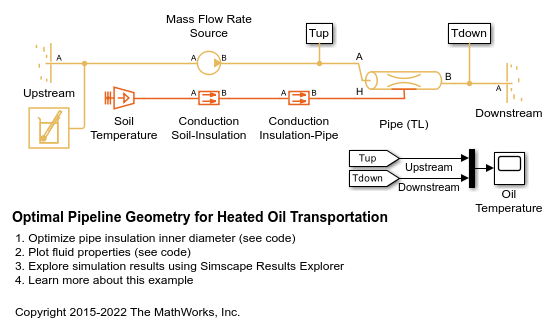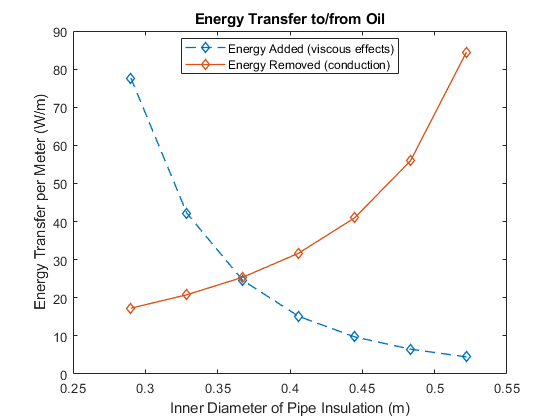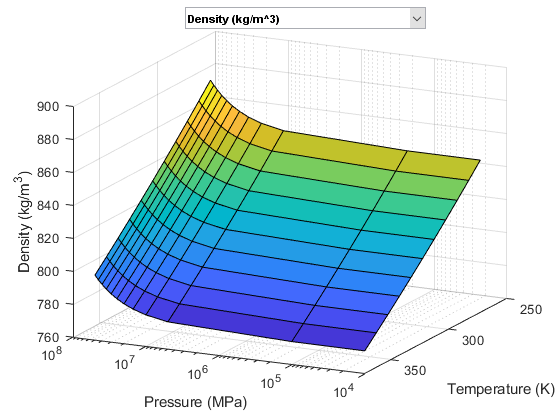热油输送的最佳管道几何
此示例模型展示了黏滞升温和传导冷却对热油输送埋地管道段温度的反向效应。这些系统的要求是原油保持在倾点以上以提供连续稳定的流动。此系统是使用 Thermal Liquid Foundation 库建模的。原油热力学属性存储在工作区矩阵中,用于填充 Thermal Liquid Settings 模块封装参数。
该模型可用于优化管径。在此示例中,假设绝缘体的外径是固定的,并且要优化的对象是内径。最佳设计是使加热和热损失项平衡,从而使整段的温度保持恒定。此模型重现了 'Optimal Pipeline Geometries and Oil Temperatures for Least Rates of Energy Expenditure During Crude-oil Transmission', S.D. Probert and C. Y. Chu, Applied Energy 14(1983) 1-31 中详细的研究。
模型

来自示波器的仿真结果

优化

流体属性
